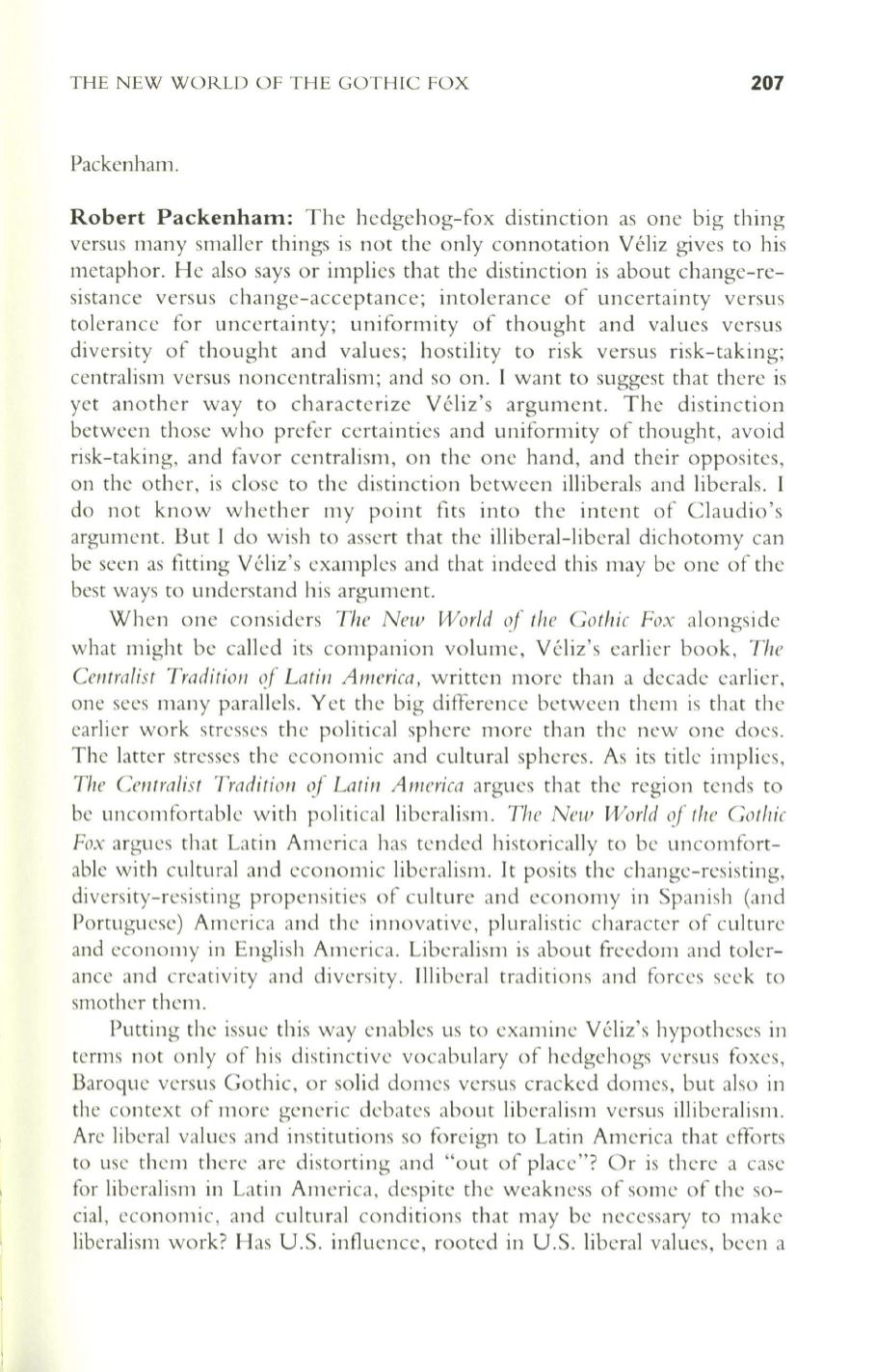
THE NEW WORLD OF THE GOTHIC FOX
207
Packenham.
Robert Packenham:
The hedgehog-fox distinction as one big thing
versus many smaller things is not the only connotation Veliz gives to his
metaphor. He also says or implies that the distinction is about change-re–
sistance versus change-acceptance; intolerance of uncertainty versus
tolerance for uncertainty; uniformity of thought and values versus
diversity of thought and values; hostility to risk versus risk-taking;
centralism versus noncentralism; and so on. I want to suggest that there is
yet another way to characterize Veliz's argument. The distinction
between those who prefer certainties and uniformity of thought, avoid
risk-taking, and favor centralism, on the one hand, and their opposites,
on the other, is close to the distinction between illiberals and liberals. I
do not know whether my point fits into the intent of Claudio's
argument. But I do wish to assert that the illiberal-liberal dichotomy can
be seen as fitting Veliz's examples and that indeed this may be one of the
best ways
to
understand his argument.
When one considers
The New World oj the Gothic Fox
alongside
what might be called its companion volume, Veliz's earlier book,
The
Cell tralis t Tradition oj Latin America,
written more than a decade earlier,
one sees many parallels . Yet the big difference between them is that the
earlier work stresses the political sphere more than the new one docs.
The latter stresses the economic and cultural spheres. As its title implies ,
The Celltralisf Traditioll oj Latin America
argues that the region tends
to
be uncomfortable with political liberalism.
The New World oj the Gothic
Fox
argues that Latin America has tended historically to be uncomfort–
able with cultural and economic liberalism. It posits the change-resisting,
diversity-resisting propensities of culture and economy in Spanish (and
Portuguese) America and the innovative, pluralistic character of culture
and economy in English America. Liberalism is about freedom and toler–
ance and creativity and diversity. Illiberal traditions and forces seek to
smother them.
Putting the issue this way enables us to examine Veliz's hypotheses in
terms not only of his distinctive vocabulary of hedgehogs versus foxes,
Baroque versus Gothic, or solid domes versus cracked domes, but also in
the context of more generic debates about liberalism versus illiberalism.
Are liberal values and institutions so foreign to Latin America that efforts
to use them there are distorting and "out of place"? Or is there a case
for liberalism in Latin America, despite the weakness of some of the so–
cial, economic, and cultural conditions that may be necessary
to
make
liberalism work? Has U.S. influence, rooted in U .S. liberal values, been a


